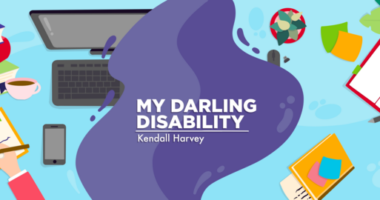A Timeline of My Friedreich’s Ataxia Progression, Part 2
Grappling with changes in my symptoms while having children

Second in a series. Read part one.
In 2013, when I was 25 and newly diagnosed with Friedreich’s ataxia (FA), the only activities that were no longer safe for me were running and wearing high heels. That was all going to change, and my list of inabilities would only grow. But I didn’t know when or how. Everything I knew about my disease back then came from a printout from my neurologist and the Wikipedia page for FA.
I’d never even heard of FA, and now this sleeping giant that I was obliviously harboring my whole life was going to ruin everything before eventually killing me. I felt scared, angry, sad, overwhelmed, hopeless, and unmotivated. Life seemed to have lost its purpose, and I was, in turn, so very lost.
While I was in this emotional hurricane, my family — unbeknownst to me — was desperately gathering information. My dad went to the scientific symposium of the Friedreich’s Ataxia Research Alliance (FARA) in September 2013 and came home full of information and plans, the first of which was for me to fly to meet with Dr. David Lynch at the Children’s Hospital of Philadelphia.
I compiled a 12-page list of questions, which boiled down to what would happen to me and when and whether I could have children.
Once again, a doctor appointment changed my life. Dr. Lynch patiently and thoroughly answered my every question, and I left feeling motivated and hopeful for the first time in nearly three months.
I became obsessed with two things: raising awareness for FA and finding my new normal. To do this, I started TeamKendall.org to share FA information with my friends and loved ones and to fundraise for rideATAXIA. It felt good to throw my angst into something productive.
All the while, Dr. Lynch’s answer to my question about kids played on repeat in my mind. When I asked him if I could have children, he said yes. When I asked him if I should have children, he said, “Before your diagnosis, did you want children?” When I answered yes, he said, “Well, then, don’t let FA stop you. Have children!”
We prayerfully decided to have Kyle, my husband, tested for FXN gene mutations. If he was a carrier, meaning he had one mutated copy of the FXN gene, there’d be a 50% chance that our biological children would have FA. If he wasn’t, our biological children would be symptomless carriers, just like my parents.
Upon finding out that Kyle wasn’t a carrier, we decided to start a family. In March 2014, my doctor confirmed that I was pregnant four weeks before my first rideATAXIA, and that motivated me with a renewed intensity. I wasn’t only fighting for my future now; I was also fighting to be a part of my son’s future.
My pregnancy, labor, and delivery were uncomplicated by my disease. After October 2014, my life was no longer focused on FA; it was about managing my disease so I could enjoy being a wife and mother to my new son, Brooks.
Pregnancy didn’t have a noticeably negative effect on my symptom progression. Apart from fatigue and not feeling stable enough to carry Brooks more than a couple of yards, I was fairly capable of my new duties. I retired from my marketing career to become a stay-at-home mom. I loved spending my days playing with Brooks and felt I could manage both FA and motherhood.
When Brooks was 18 months old, we decided to move to a different suburb of Austin, Texas. At this point, my symptoms were beginning to become more of a nuisance to my everyday life. I preferred holding on to shopping carts or strollers for support and avoided stairs when possible. Fortunately, I no longer had to carry Brooks far because he was a busy toddler.
We decided to go ahead and complete our family by welcoming our daughter, Collins, in May 2017. Once again, my pregnancy, labor, and delivery were uncomplicated by my disease. Two months after Collins was born, I decided it was time to be proactive about my symptoms, so at 29, I began weekly physical therapy.
I needed more help with Collins than I did with Brooks, and I noticed I was moving slower and that my balance worsened as I grew more tired. In May 2018, just a few weeks after Collins began walking, I fell and obliterated my ankle, requiring reconstructive surgery and eight weeks in a wheelchair. I was terrified that this was the end of my independence.
Next week, I’ll detail how my recovery led to the decision to participate in a clinical trial, begin using a walker, and adjust to life as an officially disabled ataxian.
Note: Friedreich’s Ataxia News is strictly a news and information website about the disease. It does not provide medical advice, diagnosis, or treatment. This content is not intended to be a substitute for professional medical advice, diagnosis, or treatment. Always seek the advice of your physician or another qualified health provider with any questions you may have regarding a medical condition. Never disregard professional medical advice or delay in seeking it because of something you have read on this website. The opinions expressed in this column are not those of Friedreich’s Ataxia News or its parent company, Bionews, and are intended to spark discussion about issues pertaining to Friedreich’s ataxia.








Peggy Gallagher
My son was diagnosed with FA at 23. Neither me nor my husband have any family history of this disease. My mother’s maiden name is Harvey. I know this is a long shot but I’m wondering if there is any connection to you family as your maiden is Harvey.